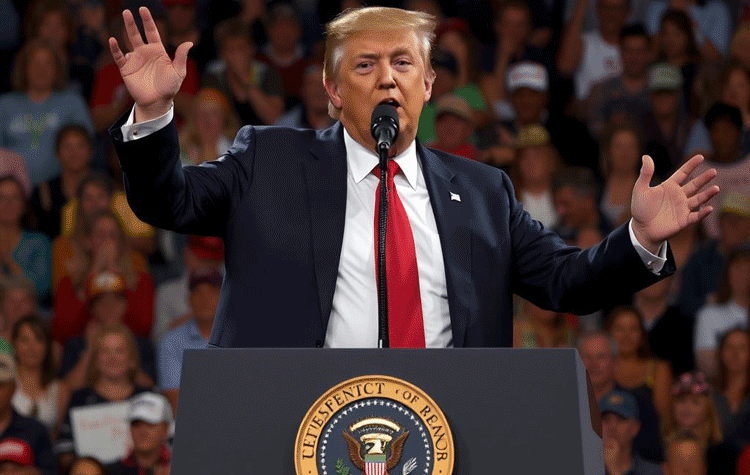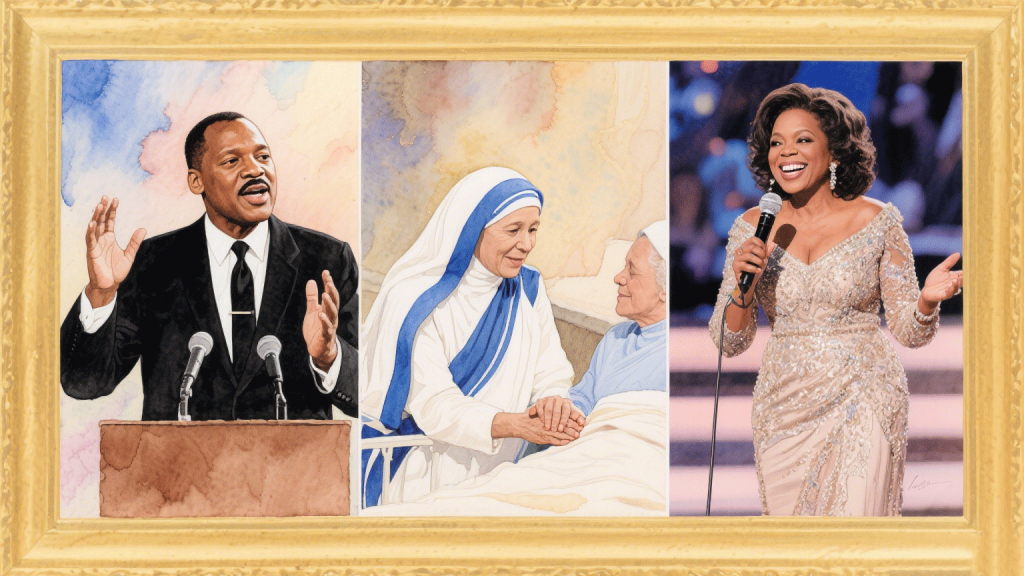Donald Trump is most often classified as an ESTP (Entrepreneurial Type) in the MBTI assessment. This classification is based on his key traits: Extraversion (E), Sensing (S), Logical Decision-Making (T), and Spontaneous Adaptability (P). His energetic public persona, preference for concrete facts over abstract theories, and impulsive decision-making all strongly align with ESTP characteristics.
Some psychologists believe Trump may be an ENTJ (Commander) due to his assertive leadership style, goal-oriented behavior, and strategic business thinking. Unlike the typical ESTP, who focuses on immediate experiences, ENTJs prioritize long-term vision—a trait reflected in Trump's "America First" policies. However, his lack of systematic planning and preference for improvisation make ESTP a more widely accepted classification.
As an ESTP, Trump's decision-making style is characterized by: 1) real-time adaptability, as reflected in his impromptu speeches and rapid policy changes; 2) risk-taking, as seen in high-stakes business deals and unexpected diplomatic actions (such as the trade war); and 3) a confrontational style, which is typical of ESTPs in high-pressure debates and public disputes.
“A bullet whizzed through the air, tearing through his right ear as he collapsed—only to stand tall 24 hours later declaring: ‘I will carry on.'”
On a July night in 2025, former U.S. President Donald Trump survived an assassination attempt at a Florida rally. While one attendee tragically died, the 79-year-old, with a gunshot wound to his ear, made a dramatic announcement the next afternoon: he would proceed to the Republican National Convention in Milwaukee. This theatrical response holds the key to understanding Trump’s personality—widely recognized in MBTI typology as a prototypical ESTP (The Entrepreneur).

Decoding Trump’s ESTP Personality Dimensions
The Myers-Briggs Type Indicator (MBTI) categorizes personalities into 16 types based on four core dimensions. Trump’s traits align strikingly with ESTP (Extraversion, Sensing, Thinking, Perception), often called “The Dynamo” or “The Challenger.”
Extraversion (E) Personified: Trump exemplifies textbook extraversion. Political psychologist Dr. Aubrey Immelman notes: “He thrives in large rallies, drawing energy from social interaction—a classic case of ‘hubristic syndrome.'”
His E-traits manifest multidimensionally:
Reality TV hosting (The Apprentice) Campaigning through unscripted voter interactions Tweeting 20,000+ times as president Maintaining 4-5 hours of sleep yet exhibiting tireless energy
Sensing (S): The Ultimate Presentist. Trump’s S-preference shows in his concrete, detail-oriented approach. As a developer, he focused on “tangible elements—construction specs, cost analyses, location values.”
Politically, he prioritized immediate metrics—unemployment rates, GDP growth, trade deficits—over abstract visions. His “Make America Great Again” slogan addressed shuttered factories and job losses rather than futuristic industrial policy.
Sensory indulgence marks another S-aspect:
Well-documented fast-food cravings (serving McDonald’s at White House events) Direct aesthetic preferences (model wives, Miss Universe pageants)
Thinking (T): Transactional Logic Supreme. Trump’s T-function drives utilitarian decision-making. His administration’s “withdrawal spree”—exiting WHO, the Paris Accord—reflected cost-benefit calculations over diplomatic tradition.
Negotiations became business transactions. Trade wars saw “tariff strategies adjusted like chess moves by a profit-driven CEO.” Critics faced immediate counterattacks, showcasing T-type confrontational tendencies.
Perceiving (P): The Improv Grandmaster. Trump’s P-trait emerges in process-orientation: “I like the chase more than the catch,” he told Playboy in 1990. This manifests politically as:
Policy shifts based on real-time developments (volatile Middle East stances) Pandemic responses lacking coherent strategy Spontaneous tweets altering diplomatic trajectories
Controversies and Complexity: Is Trump Truly ESTP?
While ESTP remains the dominant classification, psychological debates reveal nuances.
The NF Alternative: Some propose ENFJ, citing his “associative thinking that links disparate concepts.” Linguists note his “stream-of-consciousness speaking style reflects emotional rather than linear logic.”
Tripartite Model: Certain analysts suggest a three-layer structure:
Primary: NF (energetic, charismatic) Secondary: NT (big-picture strategist) Stress mode: ST (detail-focused caution)
This explains his uncharacteristic restraint during legal battles.
ENTJ Argument: A minority view emphasizes his J-like traits—goal-directedness in business. Yet this contradicts his notorious policy volatility.
How ESTP Drives Trump’s Political Calculus
Dealmaker Mindset: Trump reduces geopolitics to transactional “Art of the Deal” tactics. His 1987 bestseller outlined core tenets:
“Think big” “Fight back” “Maximize leverage”
These became governing principles, converting multilateralism into bilateral trade-offs.
Improvisational Governance: His P-trait created policy whiplash:
2025 Mexican tariffs saw 11th-hour exemptions COVID responses shifted weekly Diplomatic tweets overrode cabinet positions
Risk Addiction: Studies correlate extraversion with risk-taking. Trump’s career exemplifies this:
1990s near-bankruptcy rebounds Political bets (2016 election, 2020 refusal to concede) 2025 convention appearance post-shooting
Narcissism-Aggression Nexus: Clinicians universally note Trump’s pathological narcissism:
Eponymous branding (Trump Tower, Trump Airlines) Father’s funeral speech focused on himself Constant craving for praise
Fred Trump’s lessons shaped this: “Be tough—life is war.” Psychologist Mary Trump explains: “He learned early that vulnerability equals death.”
ESTP Leaders in Comparative Perspective
Historical Parallels: Winston Churchill shared ESTP traits—combative charisma, present-focused pragmatism. His WWII leadership blended inspirational rhetoric with tactical flexibility.
Big Five Contrasts: Trump’s extreme scores:
Extraversion: 98th percentile Agreeableness: 2nd percentile (lower than Nixon) Openness: Mixed (high imagination, low intellectual curiosity)
GOP Personality Spectrum: Traditional conservatives (e.g., Reagan) favored J-type orderliness. Trump’s P-style disrupted this—floating trial balloons, embracing contradictions.
The Strategic Value of Personality Decoding
Decision Forecasting: ESTP analysis predicts:
High-risk moves (government shutdown brinkmanship) Spontaneous dealmaking (North Korea summits) Conflict-seeking (Twitter feuds)
Crisis Dynamics: 2025 shooting response revealed ESTP strengths (resilience) and weaknesses (impulsive security decisions).
Diplomatic Playbook: Effective engagement requires:
Quantifiable wins (trade deficit reductions) Ego-stroking (crowd size compliments) Bilateral over multilateral frameworks
Limitations and Holistic Understanding
Contextual Adaptation: Presidential demands amplified certain traits (showmanship) while suppressing others (team-building).
Dynamic Complexity: Stress triggers different modes—legal battles activated uncharacteristic ST caution.
Bio-Psychosocial Roots: Queens upbringing + genetic hyperactivity created feedback loops reinforcing ESTP tendencies.

Epilogue: The Psychopolitics of Power
When Trump declared “This is destiny” after the 2025 shooting, he encapsulated the ESTP ethos—embracing chaos, converting crises into political theater.
His ESTP nature explains paradoxical outcomes:
Business triumphs and bankruptcies Unprecedented political mobilization Historic norm-shattering Deep societal polarization
As psychologist Dan McAdams observes: “He could be the most impulsive, truth-indifferent, damage-blind leader in history—yet also the most disruptively effective.”
In our personality-driven political age, decoding leadership psychology becomes essential. Trump’s case reminds us that power operates not just through policies but through the mysterious alchemy of human character—where ESTP produces both dazzling triumphs and spectacular flameouts.
Ultimately, personality analysis serves not to reduce but to illuminate. Through this lens, we better comprehend how temperament shapes history—and why certain figures, for better or worse, become the earthquakes that redefine our political landscape.

